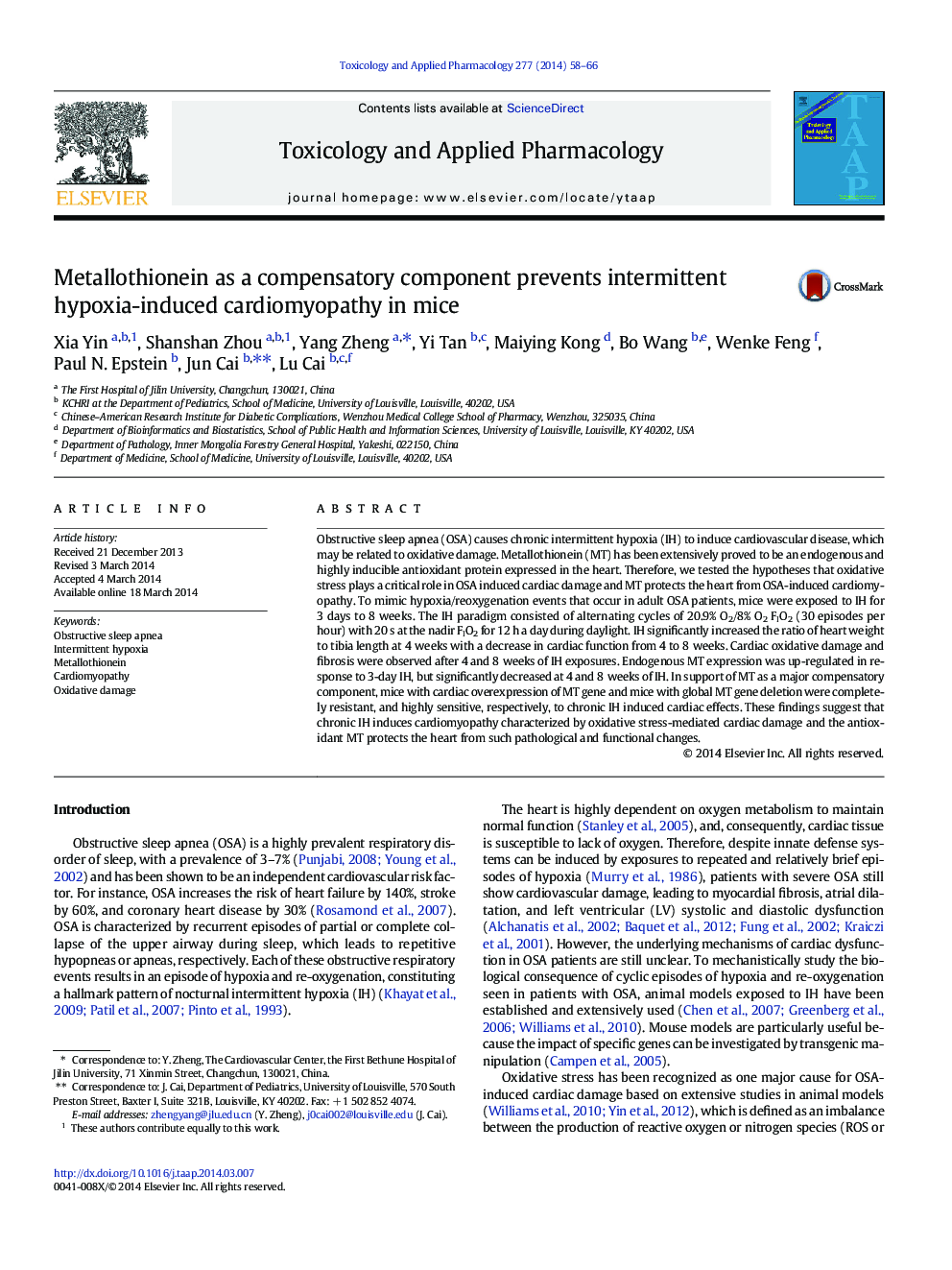| کد مقاله | کد نشریه | سال انتشار | مقاله انگلیسی | نسخه تمام متن |
|---|---|---|---|---|
| 2568639 | 1128469 | 2014 | 9 صفحه PDF | دانلود رایگان |
• The effect of intermittent hypoxia (IH) on cardiac metallothionein (MT)
• Cardiac MT expression was up-regulated in response to 3-day IH.
• Exposure to 4- or 8-week IH downregulated cardiac MT expression.
• Overexpression of cardiac MT protects from IH-induced cardiac damage.
• Global deletion of MT gene made the heart more sensitive to IH damage.
Obstructive sleep apnea (OSA) causes chronic intermittent hypoxia (IH) to induce cardiovascular disease, which may be related to oxidative damage. Metallothionein (MT) has been extensively proved to be an endogenous and highly inducible antioxidant protein expressed in the heart. Therefore, we tested the hypotheses that oxidative stress plays a critical role in OSA induced cardiac damage and MT protects the heart from OSA-induced cardiomyopathy. To mimic hypoxia/reoxygenation events that occur in adult OSA patients, mice were exposed to IH for 3 days to 8 weeks. The IH paradigm consisted of alternating cycles of 20.9% O2/8% O2 FIO2 (30 episodes per hour) with 20 s at the nadir FIO2 for 12 h a day during daylight. IH significantly increased the ratio of heart weight to tibia length at 4 weeks with a decrease in cardiac function from 4 to 8 weeks. Cardiac oxidative damage and fibrosis were observed after 4 and 8 weeks of IH exposures. Endogenous MT expression was up-regulated in response to 3-day IH, but significantly decreased at 4 and 8 weeks of IH. In support of MT as a major compensatory component, mice with cardiac overexpression of MT gene and mice with global MT gene deletion were completely resistant, and highly sensitive, respectively, to chronic IH induced cardiac effects. These findings suggest that chronic IH induces cardiomyopathy characterized by oxidative stress-mediated cardiac damage and the antioxidant MT protects the heart from such pathological and functional changes.
Figure optionsDownload high-quality image (43 K)Download as PowerPoint slide
Journal: Toxicology and Applied Pharmacology - Volume 277, Issue 1, 15 May 2014, Pages 58–66
